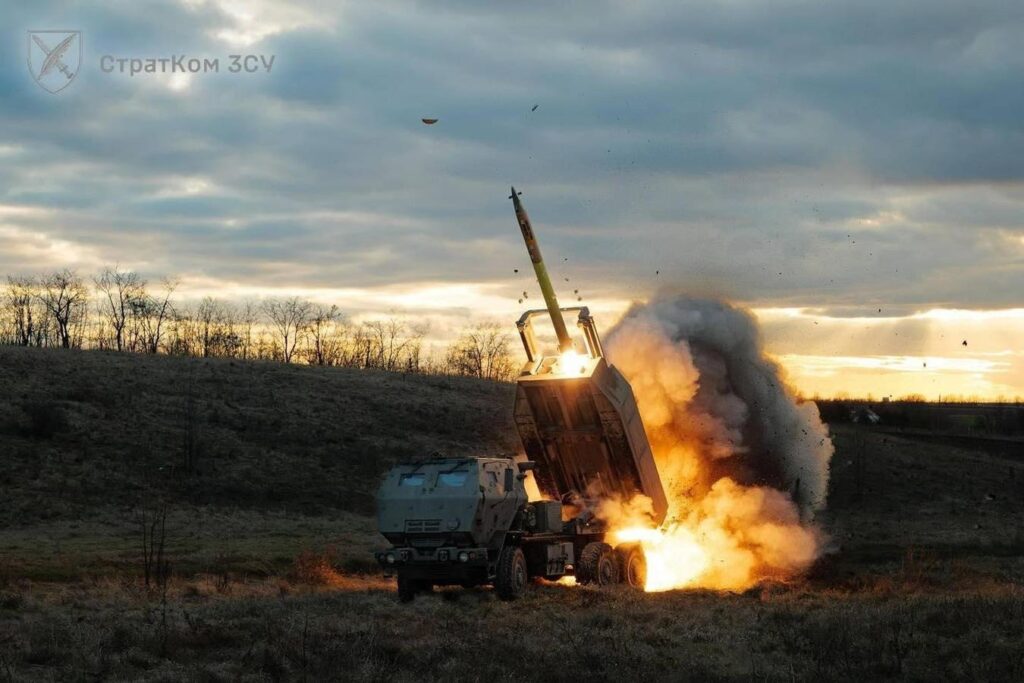A Ukrainian HIMARS.
Ukrainian defense ministry photo
Russia’s best drone unit just flew an un-jammable attack drone at least six miles behind the front line in eastern Ukraine and blew up one of the Ukrainian army’s precious High-Mobility Artillery Rocket Systems wheeled launchers.
It’s the fourth U.S.-made HIMARS the Russians have destroyed. And while the Ukrainians aren’t about to run out of HIMARS—there are around three dozen are left—the rate of loss could increase as Russia’s best drones strike deeper behind the front line.
The fast-moving HIMARS, each firing six 660-pound rockets as far as 57 miles, are some of Ukraine’s best weapons for striking Russian troop concentrations, headquarters, air-defense batteries and artillery. They’re top targets for Russian drones. But powerful electromagnetic jamming, which can ground radio-controlled drones, protects Ukrainian forces along the most critical stretches of the front.
But drones controlled via signals traveling along millimeters-thick but miles-long optical fiber “are impervious to any jamming,” explained “Roy,” an expert in electronic warfare. As Russian forces have deployed more and more fiber-optic drones, the HIMARS have become more vulnerable—especially while traveling along main roads in daytime.
A fiber-optic drone.
Ukrainian defense ministry capture
Evolving drones
It’s worrying for the Ukrainians, but hardly surprising given the rapid evolution of drone technology, that a fiber-optic drone hunted down and struck a HIMARS reportedly near Chasiv Yar on or just before Tuesday. The crew may have bailed out following the strike, but the $20-million launcher is a total write-off.
The drone was operated by the Rubicon Center of Advanced Unmanned Systems, probably the best drone team in the Russian armed forces. In late February, Rubicon deployed to Kursk Oblast in western Russia and launched a devastating wave of attacks on the main supply line supporting the Ukrainian garrison in Sudzha, the center of the Ukrainian-held salient in the oblast.
Swiftly destroying hundreds of supply trucks, Rubicon strangled the Ukrainian force—ultimately forcing it to retreat back toward the Ukrainian border in early March. Having accomplished its urgent mission in Kursk, Rubicon has apparently moved on to the next most important mission: destroying Ukraine’s HIMARS.
The Ukrainians know they’re exposed. It’s not for no reason they’ve been sending their own long-range attack drones to bombard the factories deep inside Russia that produce components for fiber-optic drones.
Read the full article here
